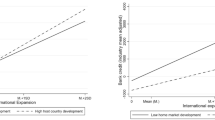Abstract
In this paper we study the comparative performance of Indian manufacturing industries during relatively recent periods of domestic regulation and de-regulation of plant entry. The period of de-regulation is accompanied by largely unchanging levels of import competition and higher output growth. The growth of labour and total factor productivity (TFPG) is observed to be higher during the deregulation period. We use data on 42 three-digit manufacturing industries. Our sample covers consumer, intermediate and capital good industries. We study the relationship between levels of effective protection and total factor productivity growth (TFPG). We found that increasing effective rates of protection was not associated with lower TFPG. We test the hypothesis that higher degree of trade protection induces greater entry of plants. This hypothesis is statistically supported. Our econometric estimates found a positive association between net entry and TFPG, after controlling for inter-industry differences in effective protection, asset size of plants and demand growth. Our results support the proposition that competition positively contributes to TFPG during deregulation.
Similar content being viewed by others
References
Aggarwal, A. K., 1991, 'Estimates of Fixed Capital Stock in Registered Manufacturing in India', Working paper No. 937, Indian Institute of Management, Ahmedabad.
Ahluwalia, I. J., 1991, Productivity and Growth in Indian Manufacturing, Delhi: OUP.
Ahluwalia, I. J., 1995, 'New Economic Policies, Enterprises, and Privatisation in India', in Cassen and Joshi (ed.), India: The Future of Economic, Delhi: Reform, OUP.
Aswicahyono, H. H., Bird Kelly and Hill Hal, 1996, 'What Happens to Industrial Structure When Countries Liberalize? Indonesia since the Mid-1980s', The Journal of Development Studies 32(3) (February), 340–363.
Baldwin, R. John, 1996, 'Productivity Growth, Plant Turnover and Restructuring in the Canadian Manufacturing Sector', in G. Mayes (ed.), Sources of Productivity Growth, Cambridge University Press.
Basu, Susanto, 1996, 'Procyclical Productivity: Increasing Returns or Cyclical Utilisation', Quarterly Journal of Economics (August), 719–751.
Centre for Monitoring Indian Economy (CMIE), 1986, The Liberalisation Process, The Author, Bombay.
Geroski, P., 1989, 'Entry, Innovation and Productivity Growth', Review of Economics and Statistics 71, 572–578.
Geroski, P., 1991, 'Some Data-Driven Reflections on the Entry Process', in P. A. Geroski and J. A. Schwalbach (eds.), Entry and Market Contestability, Oxford: Basil Blackwell.
Ghosh, K. Ajit, 1994, 'Employment in Organized Manufacturing in India', The Indian Journal of Labor Economics 37(2), 143–162.
Goldar, Bishwanath, and Saleem, N. Haseem, 1992, 'India's Tariff Structure: Effective Rates of Protection of Indian Industries', National Institute of Public Finance and Policy, Paper No. 5, October 1992, New Delhi.
Gregory, R. G. and Denis W. James, 1973, 'Do New Factories Embody Best Practice Technology?', Economic Journal (December), 1133–1155.
Harrison, E. Ann, 1994, 'An Empirical Test of the Infant Industry Argument: Comment', American Economic Review 84(4), 1090–1095.
Iscan, Tala, 1998, 'Trade Liberalisatio and Productivity: A Panel Study of the Mexican Manufacturing Industry', The Journal of Development Studies 34(5), 123–148.
Jacobsson, Staffan, 1991, 'Government Policy and Performance in the Indian Engineering Industry', Research Policy 20, 45–56.
Krueger, O. Anne and Baran Tuncer, 1982, 'An Empirical Test of the Infant Industry Argument', American Economic Review 72(5), 1142–1152.
Llu, Lili, 1993, 'Entry-Exit, Learning and Productivity Change: Evidence from Chile', Journal of Development Economics 42, 217–242.
Nickell, J. Stephen, 1996, 'Competition and Corporate Performance', Journal of Political Economy 104(4), 724–746.
Pursell, G., 1992, 'Trade Policies in India', in D. Salvatore (ed.), National Trade Polices, New York: Greenwood Press.
Roberts, J. Mark, and James R. Tybout, 1996, Industrial Evolution in Developing Countries: Micro Patterns of Turnover, Productivity, and Market Structure, New York: Oxford University Press.
Rodrik, Dani, 1995, 'Trade and Industrial Policy Reform', in J. Behrman and T. N. Srinivasan (eds.), Handbook of Development Economics, Amsterdam: North Holland.
Stykolt, S. and H. Eastman, 1960, 'A Model for the Study of Protected Oligopolies', Economic Journal 70, 336–347.
Srivastava, Vivek, 1996, Liberalization, Productivity and Competition: A Panel Study of Indian Manufacturing, Delhi: Oxford University Press.
Tybout, J., 1992, 'Linking Trade and Productivity: New Research Directions', The World bank Research Observer 6(2), 189–211.
White, Halbert, 1980, 'A Heteroskedasticity-Consistent Co-Variance Matrix Estimator and a Direct Test for Heteroskedasticity', Econometrica XVIII, 817–830.
Author information
Authors and Affiliations
Rights and permissions
About this article
Cite this article
Ramaswamy, K.V. Productivity Growth, Protection and Plant Entry in a Deregulating Economy: The Case of India. Small Business Economics 13, 131–139 (1999). https://doi.org/10.1023/A:1008146426387
Issue Date:
DOI: https://doi.org/10.1023/A:1008146426387




